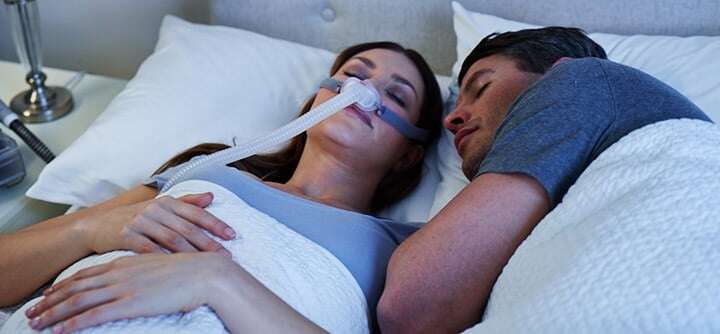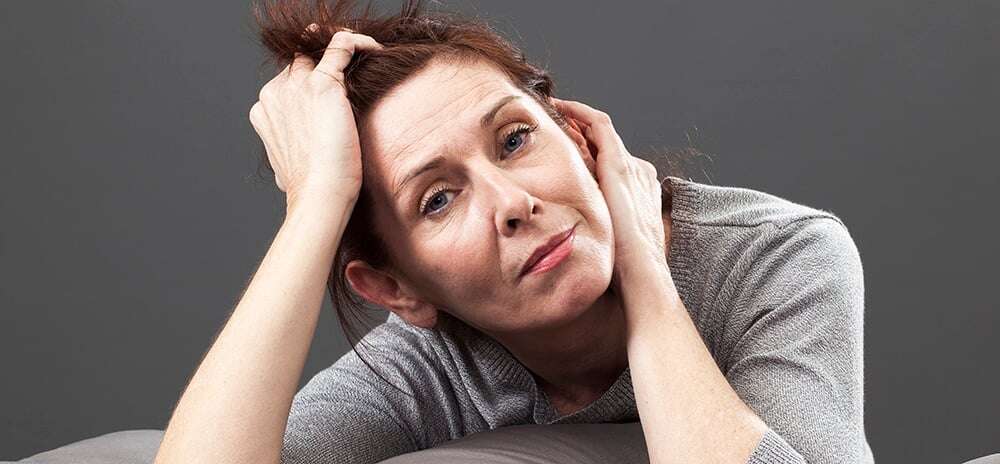The AirSense 10 AutoSet for Her from ResMed has been designed to treat female-specific OSA and sleep apnea.
How can I sleep without snoring?
It’s a common question for those of us who are noisy at night time.
If you’re desperate for a silent night and want the answer on how to rest without distributing your entire household, there are some solutions that can help you to sleep soundly.
Women and Obstructive Sleep Apnea (OSA)
Women with Obstructive Sleep Apnea have significantly different sleep challenges than men. Research has found that women tend to take longer to fall asleep than men.1 Women also have fewer apneas than men, specifically fewer full obstructive apneas (meaning their upper airways don’t collapse as often).2
However, they have more flow limitations (the upper airway narrows and less air enters the lungs). Women also tend to have clusters of events during REM (dream stage) sleep.2 All of these aspects of sleep apnea can cause disrupted sleep.
That’s in addition to the fact that women tend to sleep shorter than the prescribed 7 - 9 hours per night3, and 60% report that their sleep environment keeps them awake more than their sleeping partner.4
It seems that women are already facing an uphill battle to get a decent night’s sleep before OSA is even considered. This constant battle for quality shut-eye can lead to symptoms such as insomnia, fatigue, reduced daytime cognitive function, morning headaches, and depression.5
What is ResMed’s AirSense AutoSet “for Her” mode?
ResMed’s AirSense 10 AutoSet for Her is designed to treat female-specific OSA. For example, the AirSense AutoSet for Her contains features to ensure that females are protected against clusters of events occurring during REM sleep. In addition, when the AutoSet for Her identifies flow limitation, it responds quickly but gently to ensure patients’ lungs are getting all the oxygen they need.
And the evidence suggests that it works:
in a clinical trial, the “for Her” mode “significantly improved treatment of flow limitation in [females with mild or moderate OSA] with lower average pressures over the course of the night.”6
Comfort is key to ensuring that patients stay on their sleep apnea treatment. The AutoSet for Her contains features designed to keep the average CPAP pressure lower and make pressure changes more subtle, and therefore more comfortable, for the user.
In addition, women tend to take longer to fall asleep than men, so they may be disturbed by the CPAP pressure increasing before they need it. The AutoSet for Her features AutoRamp™, which automatically detects sleep at the beginning of the night and starts increasing the pressure after sleep is detected. By delivering effective therapy at lower pressures, this “for Her” mode treats female-specific characteristics of sleep apnea while maximising comfort, helping patients embrace treatment faster.
ResMed’s AirSense™ 10 AutoSet for Her provides treatment to women with mild to moderate OSA at lower, more comfortable settings.7
If you are interested in the ResMed AirSense 10 AutoSet for Her and have further inquiries about the product, talk to us via LiveChat or book a consultation in store.
.webp?width=1158&height=143&name=Combined%20logo%20-%20Ecom%20Main%20300x200%20(1).webp)





